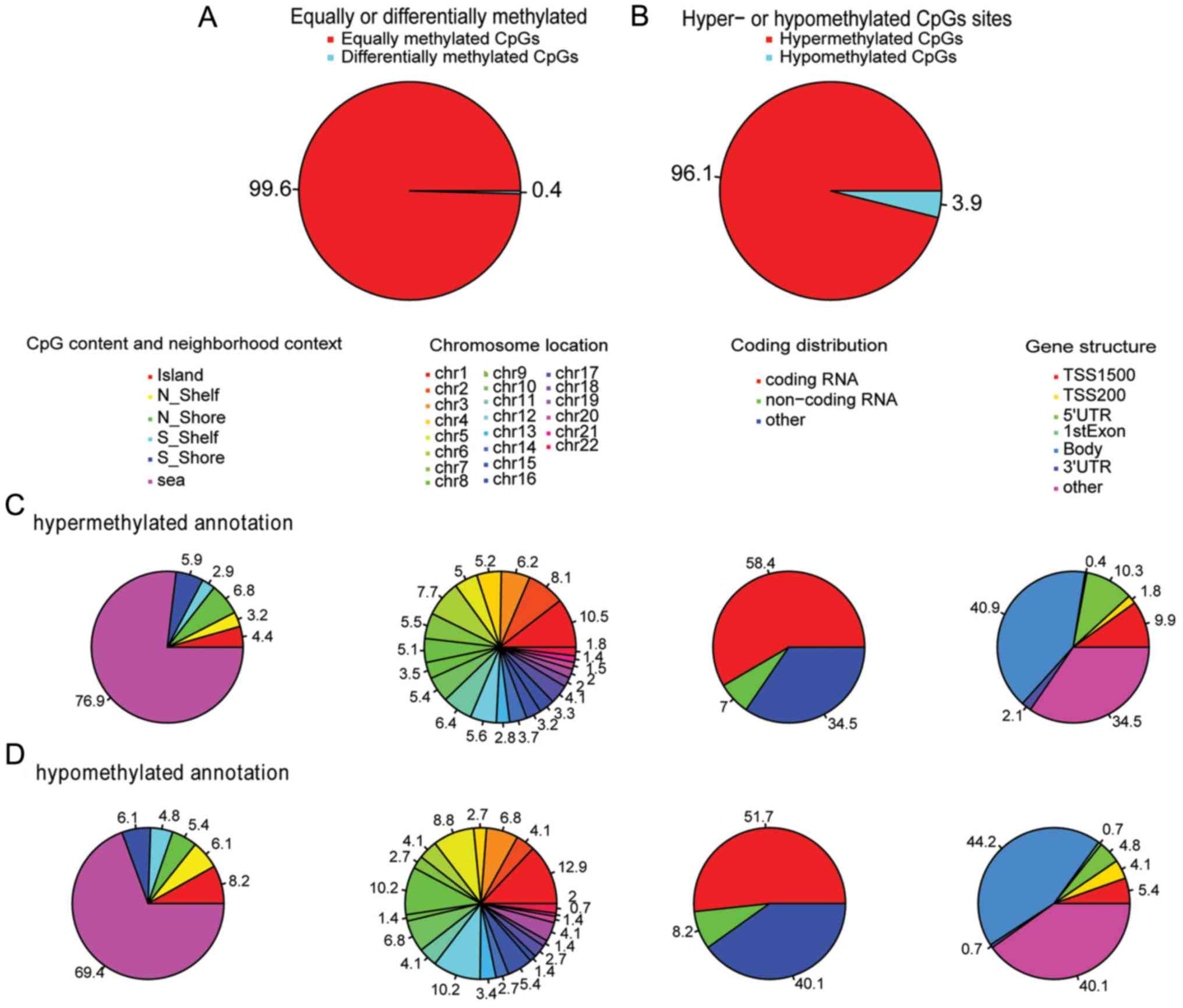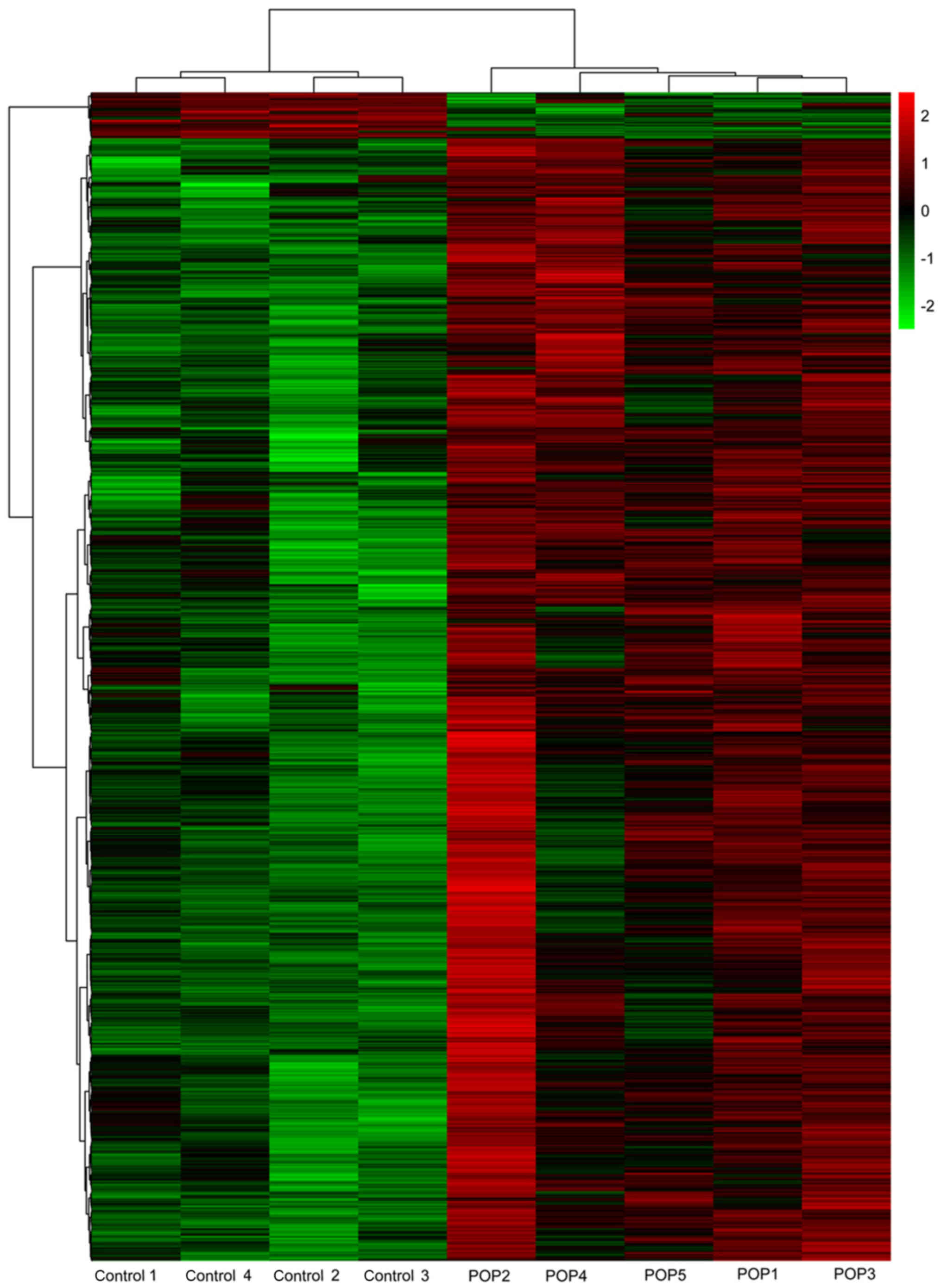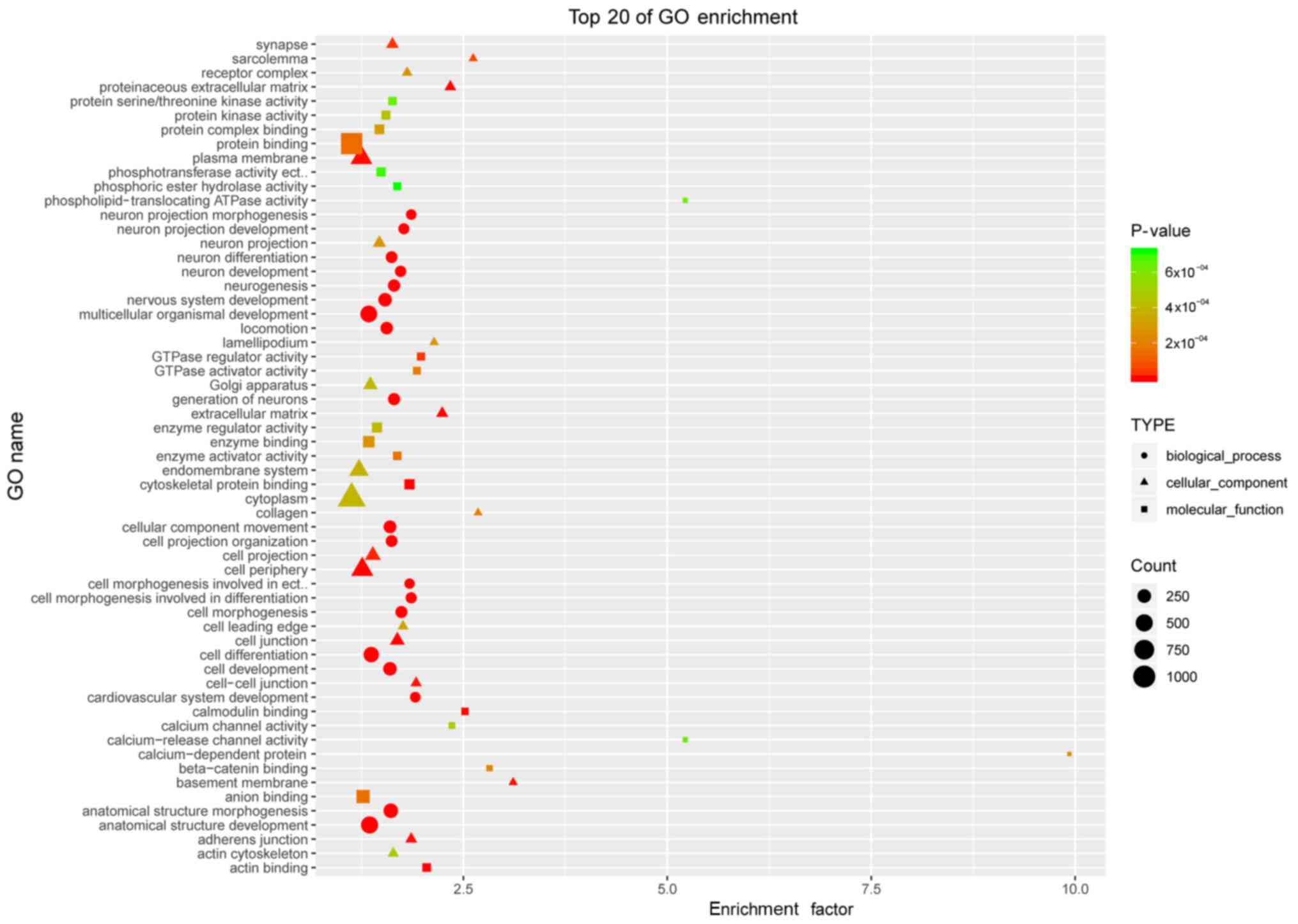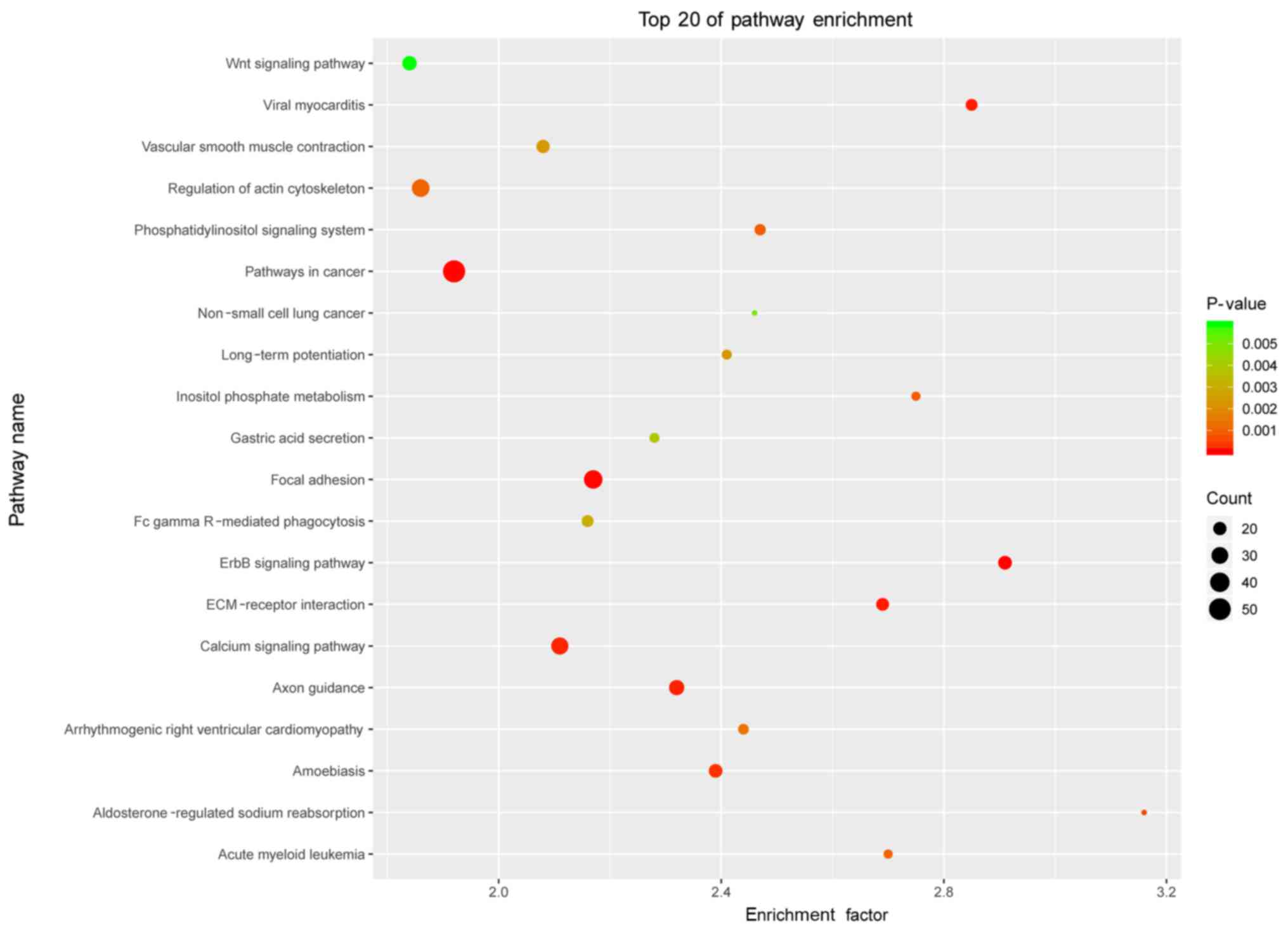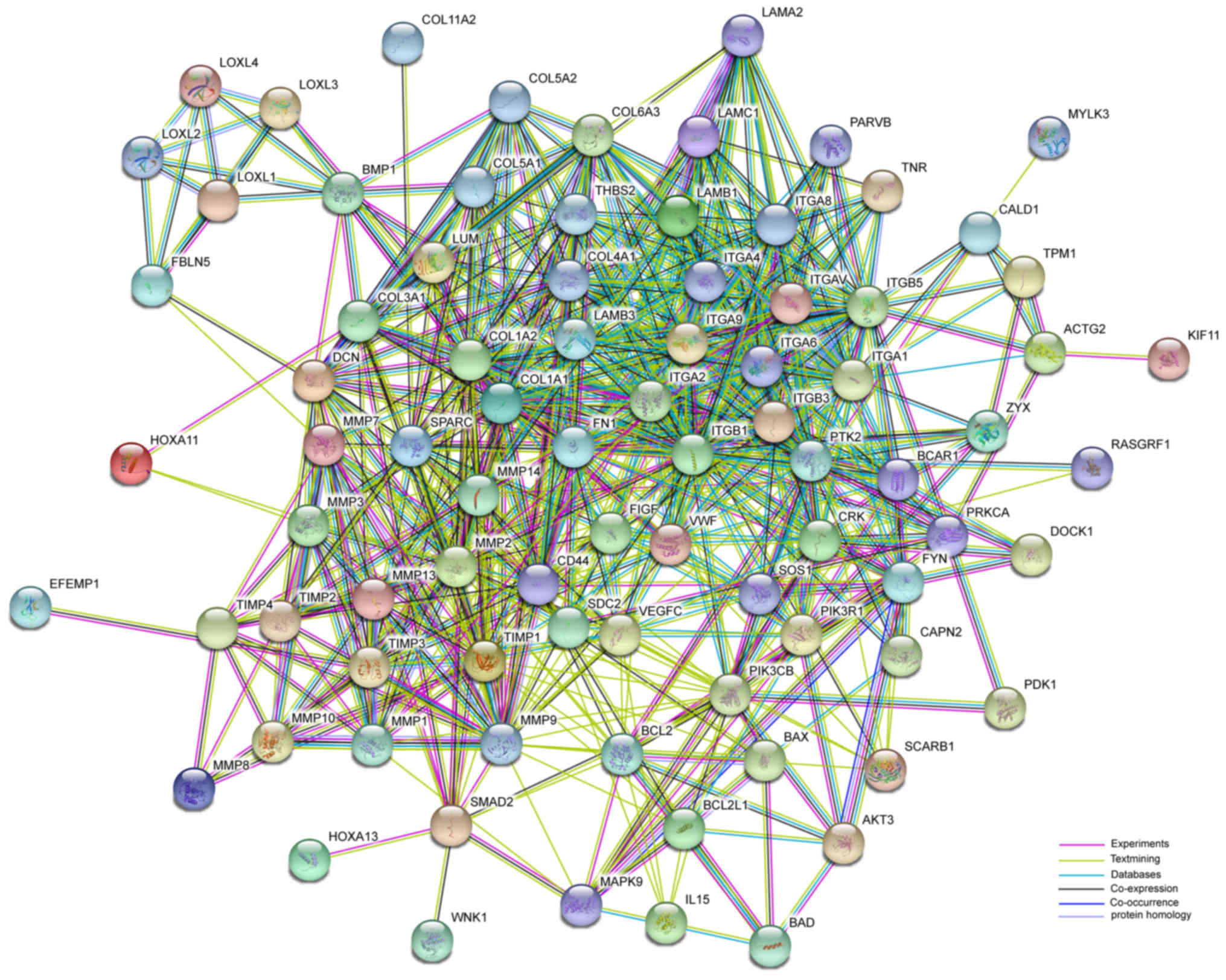|
1
|
DeLancey JO: The hidden epidemic of pelvic
floor dysfunction: Achievable goals for improved prevention and
treatment. Am J Obstet Gynecol. 192:1488–1495. 2005. View Article : Google Scholar : PubMed/NCBI
|
|
2
|
Nygaard I, Barber MD, Burgio KL, Kenton K,
Meikle S, Schaffer J, Spino C, Whitehead WE, Wu J and Brody DJ:
Pelvic Floor Disorders Network: Prevalence of symptomatic pelvic
floor disorders in US women. JAMA. 300:1311–1316. 2008. View Article : Google Scholar : PubMed/NCBI
|
|
3
|
Whitcomb EL, Rortveit G, Brown JS,
Creasman JM, Thom DH, Van Den Eeden SK and Subak LL: Racial
differences in pelvic organ prolapse. Obstet Gynecol.
114:1271–1277. 2009. View Article : Google Scholar : PubMed/NCBI
|
|
4
|
Rortveit G, Brown JS, Thom DH, Van Den
Eeden SK, Creasman JM and Subak LL: Symptomatic pelvic organ
prolapse: Prevalence and risk factors in a population-based,
racially diverse cohort. Obstet Gynecol. 109:1396–1403. 2007.
View Article : Google Scholar : PubMed/NCBI
|
|
5
|
Hendrix SL, Clark A, Nygaard I, Aragaki A,
Barnabei V and McTiernan A: Pelvic organ prolapse in the Women's
Health Initiative: Gravity and gravidity. Am J Obstet Gynecol.
186:1160–1166. 2002. View Article : Google Scholar : PubMed/NCBI
|
|
6
|
Glazener C, Elders A, Macarthur C,
Lancashire RJ, Herbison P, Hagen S, Dean N, Bain C, Toozs-Hobson P,
Richardson K, et al: Childbirth and prolapse: Long-term
associations with the symptoms and objective measurement of pelvic
organ prolapse. BJOG. 120:161–168. 2013. View Article : Google Scholar : PubMed/NCBI
|
|
7
|
Bradley CS, Zimmerman MB, Qi Y and Nygaard
IE: Natural history of pelvic organ prolapse in postmenopausal
women. Obstet Gynecol. 109:848–854. 2007. View Article : Google Scholar : PubMed/NCBI
|
|
8
|
Kudish BI, Iglesia CB, Sokol RJ, Cochrane
B, Richter HE, Larson J, Hendrix SL and Howard BV: Effect of weight
change on natural history of pelvic organ prolapse. Obstet Gynecol.
113:81–88. 2009. View Article : Google Scholar : PubMed/NCBI
|
|
9
|
Xie R, Xu Y, Fan S and Song Y:
Identification of differentially expressed genes in pelvic organ
prolapse by RNA-Seq. Med Sci Monit. 22:4218–4225. 2016. View Article : Google Scholar : PubMed/NCBI
|
|
10
|
Ak H, Zeybek B, Atay S, Askar N, Akdemir A
and Aydin HH: Microarray gene expression analysis of uterosacral
ligaments in uterine prolapse. Clin Biochem. 49:1238–1242. 2016.
View Article : Google Scholar : PubMed/NCBI
|
|
11
|
Allen-Brady K, Cannon-Albright L, Farnham
JM, Teerlink C, Vierhout ME, van Kempen LC, Kluivers KB and Norton
PA: Identification of six loci associated with pelvic organ
prolapse using genome-wide association analysis. Obstet Gynecol.
118:1345–1353. 2011. View Article : Google Scholar : PubMed/NCBI
|
|
12
|
Allen-Brady K, Cannon-Albright LA, Farnham
JM and Norton PA: Evidence for pelvic organ prolapse predisposition
genes on chromosomes 10 and 17. Am J Obstet Gynecol. 212:771.e1–e7.
2015. View Article : Google Scholar
|
|
13
|
Rao S, Lang J, Zhu L and Chen J: Exome
sequencing identifies a novel gene, WNK1, for susceptibility to
pelvic organ prolapse (POP). PLoS One. 10:e01194822015. View Article : Google Scholar : PubMed/NCBI
|
|
14
|
Sui X, Zhu J, Zhou J, Wang X, Li D, Han W,
Fang Y and Pan H: Epigenetic modifications as regulatory elements
of autophagy in cancer. Cancer Lett. 360:106–113. 2015. View Article : Google Scholar : PubMed/NCBI
|
|
15
|
Klutke J, Stanczyk FZ, Ji Q, Campeau JD
and Klutke CG: Suppression of lysyl oxidase gene expression by
methylation in pelvic organ prolapse. Int Urogynecol J. 21:869–872.
2010. View Article : Google Scholar : PubMed/NCBI
|
|
16
|
Aryee MJ, Jaffe AE, Corrada-Bravo H,
Ladd-Acosta C, Feinberg AP, Hansen KD and Irizarry RA: Minfi: A
flexible and comprehensive Bioconductor package for the analysis of
Infinium DNA methylation microarrays. Bioinformatics. 30:1363–1369.
2014. View Article : Google Scholar : PubMed/NCBI
|
|
17
|
Bird AP and Wolffe AP: Methylation-induced
repression-belts, braces, and chromatin. Cell. 99:451–454. 1999.
View Article : Google Scholar : PubMed/NCBI
|
|
18
|
Christensen BC, Houseman EA, Marsit CJ,
Zheng S, Wrensch MR, Wiemels JL, Nelson HH, Karagas MR, Padbury JF,
Bueno R, et al: Aging and environmental exposures alter
tissue-specific DNA methylation dependent upon CpG island context.
PLoS Genet. 5:e10006022009. View Article : Google Scholar : PubMed/NCBI
|
|
19
|
Rang FJ and Boonstra J: Causes and
consequences of age-related changes in DNA methylation: A Role for
ROS? Biology (Basel). 3:403–425. 2014.PubMed/NCBI
|
|
20
|
Borazjani A, Kow N, Harris S, Ridgeway B
and Damaser MS: Transcriptional regulation of connective tissue
metabolism genes in women with pelvic organ prolapse. Female Pelvic
Med Reconstr Surg. 23:44–52. 2017. View Article : Google Scholar : PubMed/NCBI
|
|
21
|
Sun MJ, Cheng YS, Sun R, Cheng WL and Liu
CS: Changes in mitochondrial DNA copy number and extracellular
matrix (ECM) proteins in the uterosacral ligaments of premenopausal
women with pelvic organ prolapse. Taiwan J Obstet Gynecol. 55:9–15.
2016. View Article : Google Scholar : PubMed/NCBI
|
|
22
|
Connell KA, Guess MK, Chen H, Andikyan V,
Bercik R and Taylor HS: HOXA11 is critical for development and
maintenance of uterosacral ligaments and deficient in pelvic
prolapse. J Clin Invest. 118:1050–1055. 2008.PubMed/NCBI
|
|
23
|
Alarab M, Bortolini MA, Drutz H, Lye S and
Shynlova O: LOX family enzymes expression in vaginal tissue of
premenopausal women with severe pelvic organ prolapse. Int
Urogynecol J. 21:1397–1404. 2010. View Article : Google Scholar : PubMed/NCBI
|
|
24
|
Kobak W, Lu J, Hardart A, Zhang C,
Stanczyk FZ and Felix JC: Expression of lysyl oxidase and
transforming growth factor beta2 in women with severe pelvic organ
prolapse. J Reprod Med. 50:827–831. 2005.PubMed/NCBI
|
|
25
|
Klutke J, Ji Q, Campeau J, Starcher B,
Felix JC, Stanczyk FZ and Klutke C: Decreased endopelvic fascia
elastin content in uterine prolapse. Acta Obstet Gynecol Scand.
87:111–115. 2008. View Article : Google Scholar : PubMed/NCBI
|
|
26
|
Wang X, Li Y, Chen J, Guo X, Guan H and Li
C: Differential expression profiling of matrix metalloproteinases
and tissue inhibitors of metalloproteinases in females with or
without pelvic organ prolapse. Mol Med Rep. 10:2004–2008. 2014.
View Article : Google Scholar : PubMed/NCBI
|
|
27
|
Alarab M, Kufaishi H, Lye S, Drutz H and
Shynlova O: Expression of extracellular matrix-remodeling proteins
is altered in vaginal tissue of premenopausal women with severe
pelvic organ prolapse. Reprod Sci. 21:704–715. 2014. View Article : Google Scholar : PubMed/NCBI
|
|
28
|
Usta A, Guzin K, Kanter M, Ozgul M and
Usta CS: Expression of matrix metalloproteinase-1 in round ligament
and uterosacral ligament tissue from women with pelvic organ
prolapse. J Mol Histol. 45:275–281. 2014. View Article : Google Scholar : PubMed/NCBI
|
|
29
|
Yilmaz N, Ozaksit G, Terzi YK, Yilmaz S,
Budak B, Aksakal O and Sahin FI: HOXA11 and MMP2 gene expression in
uterosacral ligaments of women with pelvic organ prolapse. J Turk
Ger Gynecol Assoc. 15:104–108. 2014. View Article : Google Scholar : PubMed/NCBI
|
|
30
|
Liang CC, Huang HY and Chang SD: Gene
expression and immunoreactivity of elastolytic enzymes in the
uterosacral ligaments from women with uterine prolapse. Reprod Sci.
19:354–359. 2012. View Article : Google Scholar : PubMed/NCBI
|
|
31
|
Ma Y, Guess M, Datar A, Hennessey A,
Cardenas I, Johnson J and Connell KA: Knockdown of Hoxa11 in vivo
in the uterosacral ligament and uterus of mice results in altered
collagen and matrix metalloproteinase activity. Biol Reprod.
86:1002012. View Article : Google Scholar : PubMed/NCBI
|
|
32
|
Connell KA, Guess MK, Chen HW, Lynch T,
Bercik R and Taylor HS: HOXA11 promotes fibroblast proliferation
and regulates p53 in uterosacral ligaments. Reprod Sci. 16:694–700.
2009. View Article : Google Scholar : PubMed/NCBI
|
|
33
|
Kufaishi H, Alarab M, Drutz H, Lye S and
Shynlova O: Comparative characterization of vaginal cells derived
from premenopausal women with and without severe pelvic organ
prolapse. Reprod Sci. 23:931–943. 2016. View Article : Google Scholar : PubMed/NCBI
|
|
34
|
Kufaishi H, Alarab M, Drutz H, Lye S and
Shynlova O: Static mechanical loading influences the expression of
extracellular matrix and cell adhesion proteins in vaginal cells
derived from premenopausal women with severe pelvic organ prolapse.
Reprod Sci. 23:978–992. 2016. View Article : Google Scholar : PubMed/NCBI
|
|
35
|
Li BS, Guo WJ, Hong L, Liu YD, Liu C, Hong
SS, Wu DB and Min J: Role of mechanical strain-activated PI3K/Akt
signaling pathway in pelvic organ prolapse. Mol Med Rep.
14:243–253. 2016. View Article : Google Scholar : PubMed/NCBI
|
|
36
|
Chen X, Kong X, Liu D, Gao P, Zhang Y, Li
P and Liu M: In vitro differentiation of endometrial regenerative
cells into smooth muscle cells: Alpha potential approach for the
management of pelvic organ prolapse. Int J Mol Med. 38:95–104.
2016. View Article : Google Scholar : PubMed/NCBI
|
|
37
|
Giancotti FG and Ruoslahti E: Integrin
signaling. Science. 285:1028–1032. 1999. View Article : Google Scholar : PubMed/NCBI
|
|
38
|
Rhee SH, Zhang P, Hunter K, Mama ST,
Caraballo R, Holzberg AS, Seftel RH, Seftel AD, Echols KT and
DiSanto ME: Pelvic organ prolapse is associated with alteration of
sphingosine-1-phosphate/Rho-kinase signalling pathway in human
vaginal wall. J Obstet Gynaecol. 35:726–732. 2015. View Article : Google Scholar : PubMed/NCBI
|
|
39
|
Pavlidis P, Li Q and Noble WS: The effect
of replication on gene expression microarray experiments.
Bioinformatics. 19:1620–1627. 2003. View Article : Google Scholar : PubMed/NCBI
|



